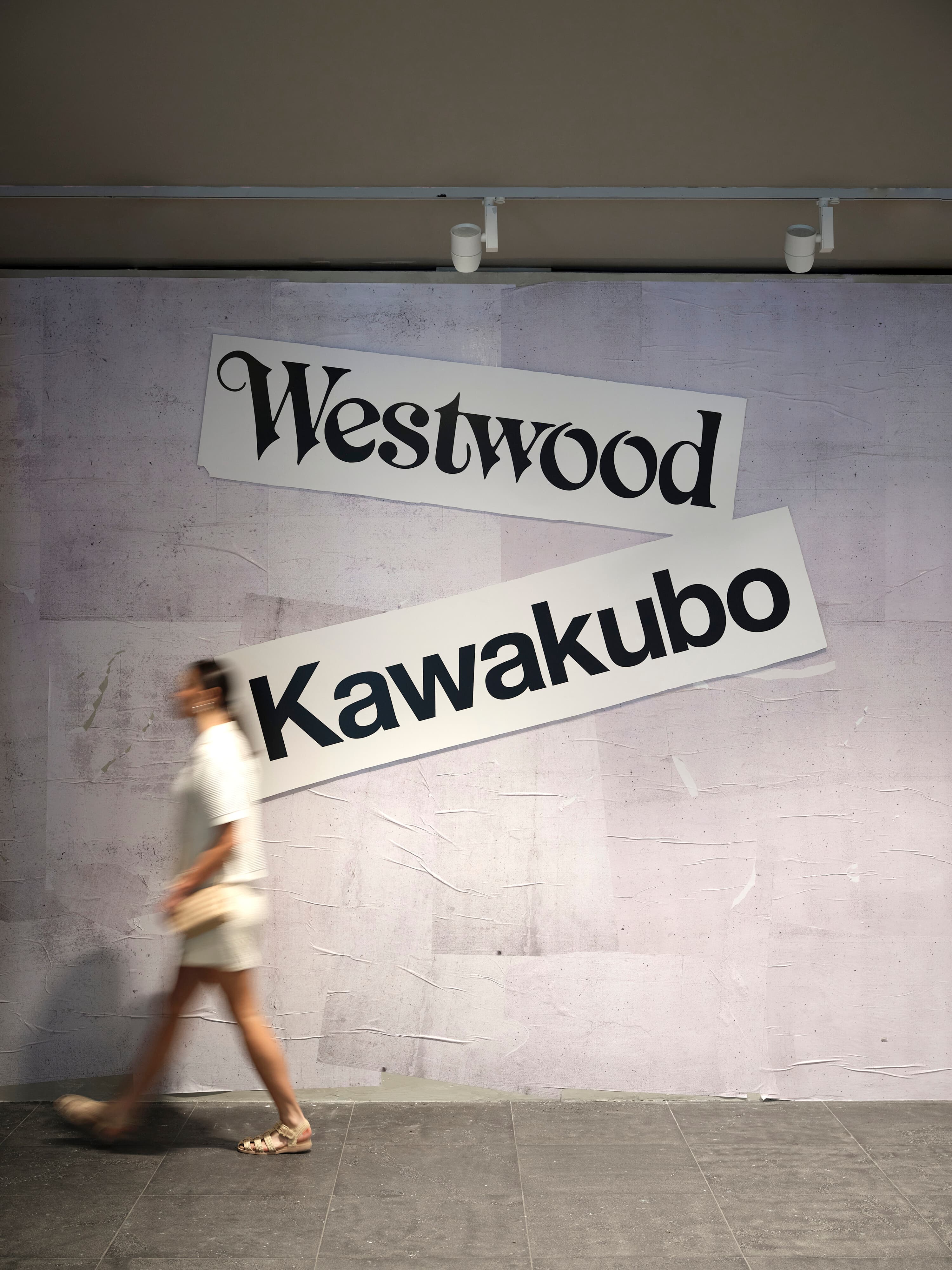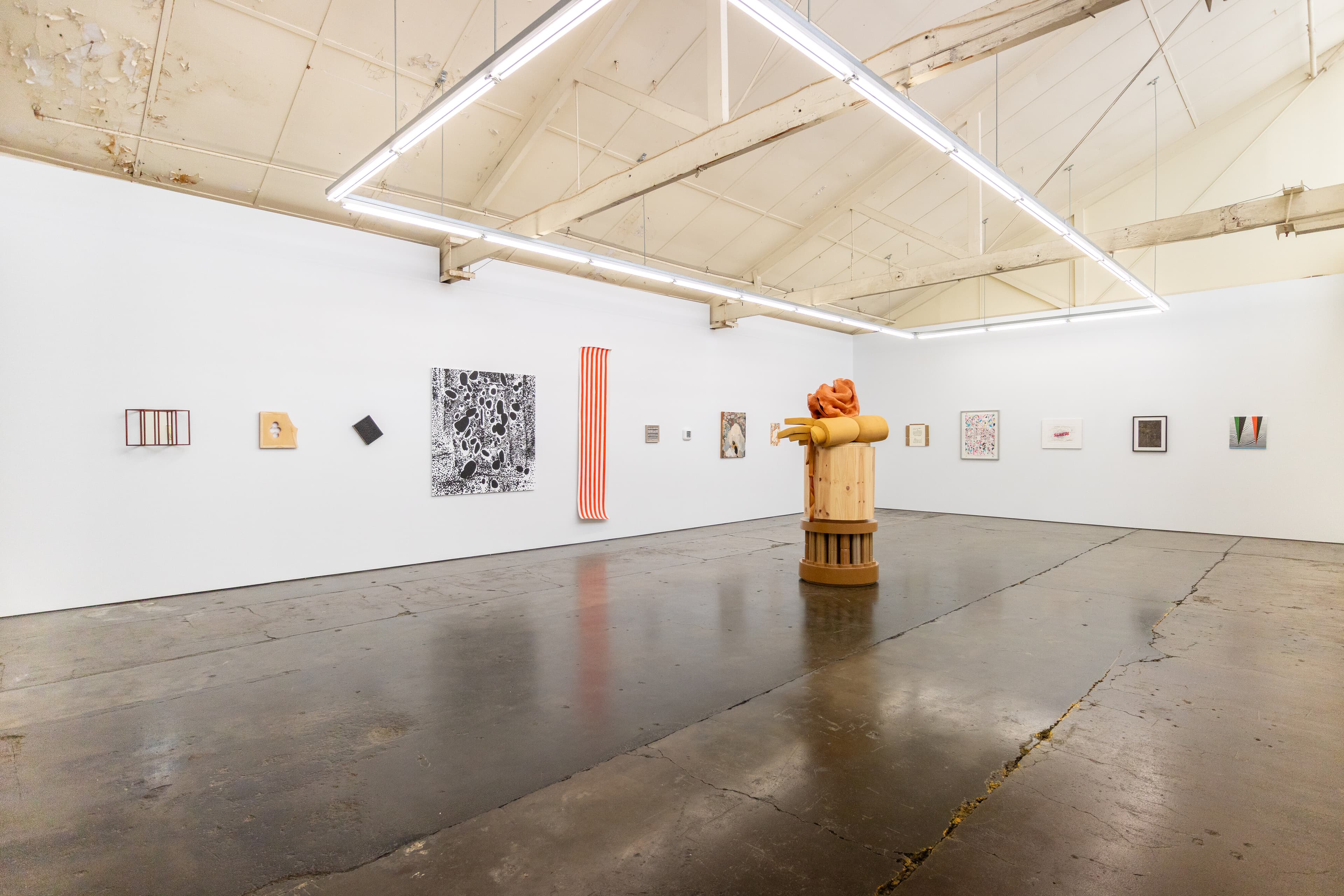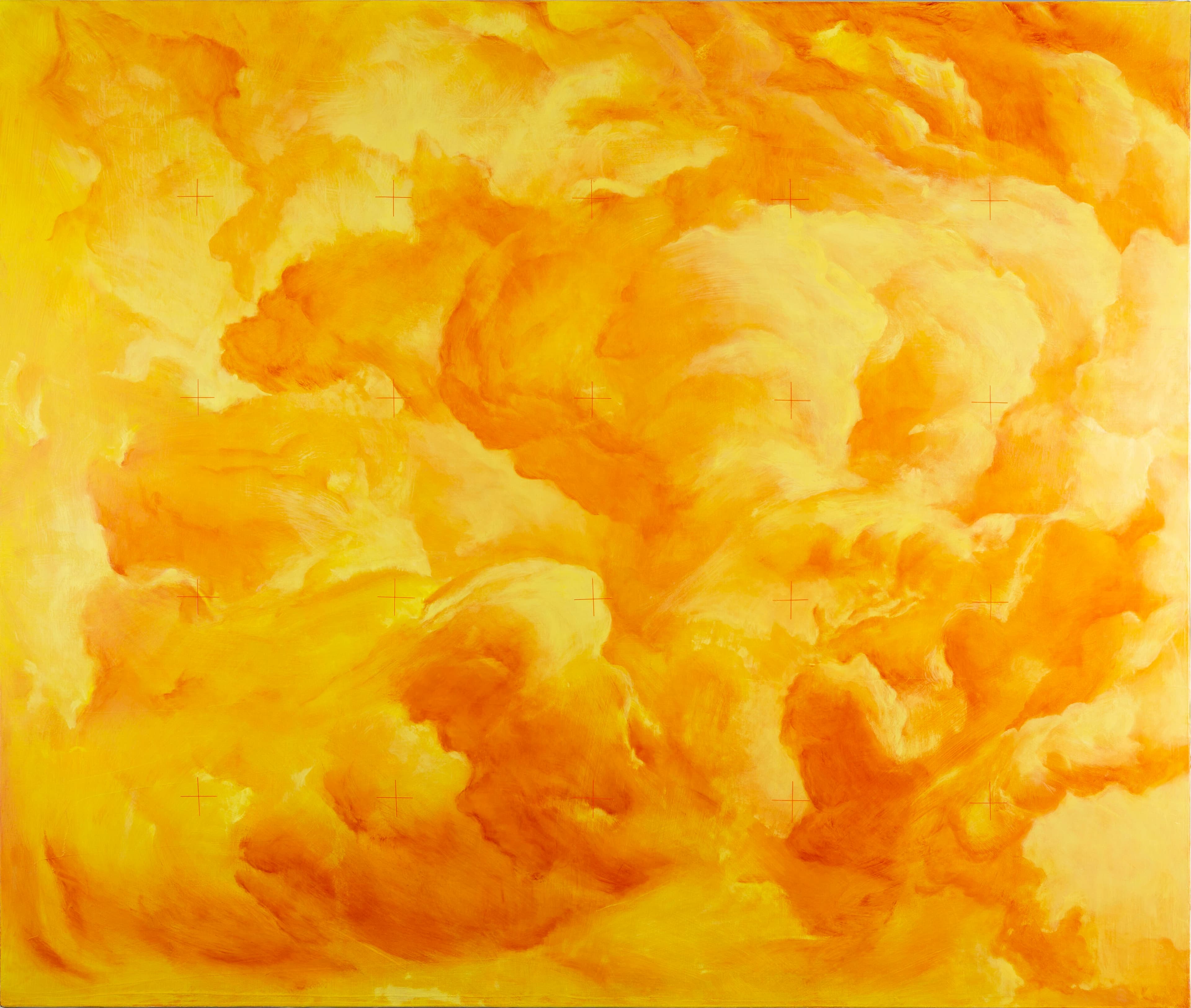Yoko Ono, I LOVE YOU EARTH (2023)
Philip Brophy
Over the last few months, while walking south along St Kilda Road over Princes Bridge, you might have spied a large outdoor banner. It’s a horizontal rectangle of white, not dissimilar in scale to a drive-in screen. In all-caps and a discreet font, it says “I LOVE YOU EARTH.” Along the bottom edge, centrally positioned in a considerably diminished font size and in lowercase: “yoko ono 2023.” For the art-savvy portion of the Melbourne public, this banner vibrates at the intersection of Minimalism, Fluxus, and Concrete Poetry. But art these days needs no grounding in anything other than an audience’s own sense of self, so for many the banner will glow warmly in the Venn diagram enclosure of Marie Kondo, Chanel and Greta Thunberg. While it’s easy to buzz-kill the “curated experience” the public enjoys as they wander past this banner—Yoko Ono’s I LOVE YOU EARTH (2023)—I’m more interested in how it performs as signage, and how its momentary occupancy of public space offers a portal into a fascinating and perplexing realm, one far more than its self-tagged, interventionist gesture allows.
The modest lowercase branding of “yoko ono” on the banner denies (somewhat disingenuously) the artist’s fame, and her political art-historical baggage. To avoid discussing this would be equally disingenuous. John Lennon and Yoko Ono launched their global peace campaign War Is Over at the end of 1969. It commenced with their two one-week “bed-ins” in Montréal and Amsterdam, the media coverage of which stands as a time capsule of the counter culture’s utopian programme of social change through participatory action. The media-baiting events were a mix of public theatre (developed by Abbie Hoffman and others for the Youth International Party (the “Yippies”) in 1967) and satirical tele-absurdism like Laugh-In (created by the comedy duo Rowan & Martin in 1968). Immediately after, Lennon and Ono rented large billboards in prime sites in Los Angeles, New York, Rome, Toronto, Amsterdam, Athens, Paris, Helsinki, Berlin, Tokyo, Hong Kong, and London. On a pure white background, they mimicked front page news headlines, declaring in bold caps “WAR IS OVER!” with a caveat underneath in a much smaller font “IF YOU WANT IT.” In even smaller type under that: “Happy Christmas from John & Yoko.” Ono had been doing text pieces for at least seven years by this stage, starting with the series Instructions for Paintings (1962) and compiled into the artist’s publication Grapefruit (1964). Originally produced as a vertical banner to mark Earth Day for the Serpentine Gallery’s “Back To Earth” project in 2021, the black-text-on-white-void of I LOVE YOU EARTH draws on her bifurcated practice and split persona: it stylistically grounds her in the traditions of text art, Zen koans, public service announcements, and media publicity stunts.
By the end of the 1960s, the Lennon and Ono nexus had established a cultural marriage of, to use today’s parlance, alternative rock and contemporary art. By the time the Whitney Museum in New York staged a retrospective exhibition Yoko Ono: Objects, Films in 1989, Ono had become emblematic of a self-revisioning, multi-waved feminist who had coursed through generational shifts and fluctuations in media receptivity. While some might be put off by Ono’s use of notoriety (via her own practice, overly-eager feminist curators, or modish record producers), she remains a fascinating figure not because of her art practice, but because of the way in which she has chosen to be uncomfortably embedded in the negativity of her cultural situation. In other words, she has consistently presented herself as an artist who firmly retains an artistic ethic while operating in spheres and channels that have not automatically privileged artistic discourse. While I remain unimpressed by any 1960s countercultural moment or instance—and contemporary art’s ongoing recoupment of any fey gesture toward social disobedience—I sense that Ono has always had a clear and even cynical eye and ear on what she creates, instigates or produces.
To come clean: the sentiment of I LOVE YOU EARTH I find irksome, naive and even irresponsible. Most people hold out hope for such a sentiment to change the world. My position is that art is impotent in effecting such change, and only entertains such hope through hubris, egotism or arrogance. But let’s not debate that for the moment—let’s instead concentrate on the artwork under review here. Do bright-eyed, future-dreaming Instagrammers walking along St Kilda Road realise that what they’re looking at is essentially an advertisement? Ono utilised the same banner (same concept and style, slightly different design) to promote the release of her album Warzone (2018). One of the tracks on the record is titled “I Love You Earth.” Have a listen and see what you think. You might be moved to tears. Or you might simply feel embarrassment, as her frail voice sing-songs in warbling, uneven pitch over lightly vamped piano chords (not quite “Imagine” but in the family spirit of its earnest simplicity). (Prior to this version, the song was recorded with more controlled emotional impact as a duet between Anohni and Ono as a 10” single in the lead-up to Anohni’s album Hopelessness (2015).)
Warzone—like so many of Ono’s projects in her long career—is “Ono-generated.” Using tactics similar to those of Performance Art titans Joseph Beuys and Marina Abramović, Ono repurposes, reconfigures, and recontextualises fragments of earlier work as a way to assert identity continuity. Instigated to celebrate her fiftieth anniversary as a recording artist, Warzone sees Ono doing cover versions of selected tracks from her recorded catalogue, this time in reductive, deconstructed, and poetically minimalised versions. (The title track is from the last great album she recorded, Rising (1995).) The newly recorded songs are each devoid of their original arrangements and left to resonate as frail utterances. It’s a clearly articulated concept of an artist exposing themselves, symbolically recalling Ono’s famous work Cut Piece (1964), where she invites the audience to cut sections of her clothing while she passively allows the disrobing to unfold. Regardless, I find the resultant songs on Warzone cloying and desperate pleas for my empathy.
The title Warzone reminds me less of a universalist plea for peace (itself a problematic tack) and more of a passive-aggressive face-off to injustices wrought by the world. A major channel of Ono’s work as a self-named “peace activist” carries this flow of symbolic protestation. In the 2018 exhibition at Mori Art Museum in Tokyo, pompously titled “Catastrophe and the Power of Art”, Ono presented the installation Add Color Painting (Refugee Boat) (2016–18). People loved it. I hated it. A refugee boat plonked in a white cube gallery space, smothered with paint doodled “messages to the world” scrawled in ultramarine blue by people who believe that such gestures will change the world for good. But despite my distaste for such playschool projects and feel-good sentimentality, I would have to admit that Ono’s wilful exploitation of her cultural products and their mediatised dispersion in the I LOVE YOU EARTH banner is more effective in expressing a nurturing and positive view of global conditions. I’m sure some people would have been moved to tears after suddenly reading Ono’s enlarged text as they trudged to or from whatever demeaning employment they daily suffer. Furthermore, their experience need not have been dependent on a foreknowledge of Ono’s history, practice or legacy.
If few people could get the connection to the 2018 song and its media campaign, even fewer would know that the song first appeared on Ono’s Starpeace (1985), under the title “I Love You, Earth.” Man, what a record. It’s a concept album (always a dangerous thing) designed to spread the word for global peace, particularly in the midst of Ronald Regan’s Star Wars missile defence system being mounted at the time. But OMG is this record an embarrassment of riches. Imagine Rocket’s space disco “Future Woman” (1976), The Carpenters’ plaintive “Calling Occupants of Interplanetary Craft” (1978), Neil Young’s vocoder-fest Trans (1983), and Andrew Lloyd Weber’s musical on rollerblades Starlight Express (1984)—all played by what sounds like a Caribbean-style band performing at a Las Vegas casino. Unbelievably, the rhythm section is Sly and Robbie (they added the muscular throb to Grace Jones’ earthy arabesques), and the record is produced by Bill Laswell. Yet the record is woefully out of its sonic depth, leaving Ono’s ironically robotised voice and pleading lyrical sentiments to ring hollow and even farcical. It remains a strange record, though, because ironically—and Ono would hate to read this—it performs precisely how Idol music functions in Japan. That is, its cringeworthy presentation of Selfhood is at once highly fabricated and clinically self-exposing. The pop industrial machinery that generates the star appeal of Idol singers in Japan is one of hyper-plasticised performativity. It’s a sensibility that pushes theatrics into overdrive and femininity into warp speed, to a degree that is nearer to Performance Art than film acting or record singing. The more I reflect on this, the more I appreciate the complexity of Ono’s collision of artistic practice and cultural intervention.
Nonetheless, by 1985 Ono seemed to have, as James Murphy would say, lost her edge. A decade later, she wrote New York Rock (1994): an allegorical musical based on her relationship with Lennon (unnamed and performed as Jill and Bill). The story was narratively threaded through a selection of songs Ono had written since the 1970s, performed by actors/singers/dancers for the off-Broadway review. The cast recording sounds more like Disney’s Frozen (2013) than Ono’s Fly (1970). Such events of weird self-mythologisation and self-curation (there are more) cloud much of Ono’s work. But only a few years before Starpeace, she directed one of the best music videos ever (true), for her single Walking On Thin Ice (1981). Eschewing the bombastic spectacularism of the MTV era, the video sees her processing, reframing and emotively editing fragments of lo-res home video footage of her and John Lennon hanging around Central Park and Times Square (nearby sites of their original War Is Over billboards) around the time of the recording sessions. When Lennon was shot by psycho-fan Mark David Chapman outside their New York apartment in The Dakota, Lennon was holding a tape of the final mix of the song; it was the final recording he worked on. The footage in the music video at times takes on the perspective of stalking, with staccato edits that progressively zoom in on Lennon in the distance. It’s creepy. The single is an amazing track, featuring a driving rhythm section of Tony Levin (King Crimson) on pulsing bass, Andy Newmark (Sly & The Family Stone) on driving drums, and Earl Slick (David Bowie) on searing guitar. Ono’s desperate yet unemotional chant of “I” in the song’s middle break-down is chilling.
The sessions that produced the single became the album Season of Glass (1981), although the single was excluded from the release. The cover photograph by Ono is among her most powerful visual statements: a half-full/half-empty glass of water sits on a window ledge next to the bloodied glasses that Lennon was wearing when fatally shot. Through the glasses (both objects) one can see Central Park in winter, bleached a cool grey with a horizon of East Side buildings rendered in soft focus. It makes one realise that—like Warhol’s shooting by Valerie Solanas—Lennon’s shooting undoubtedly transformed Ono’s worldview. The event lent it a type of haunted mortality, a worldly displacement and an extended grieving that gives a certain weight to her post-1981 work and activities in ways that bely their presence and distribution within popular culture.
Part of me is strangely disturbed by how such a complex artist—one ensnared by transcultural collapses, sexist barriers, Pop prejudices, and professional exigencies—currently thrives as a performative panacea for a contemporary art world. Biennales and triennials use Ono as if she is a high-brow, super-ethical, hyper-humanist Wonder Woman, offering a time-machine leap back to the 1960s and a revisionist take on Pop Art. How did the avant-actress in Satan’s Bed (1964), the performance artist of Cut Piece (1964), the co-director and composer/performer of Fly (1970), and the onibaba singer of “Why” (1970) end up this way? But part of me is reassured that by simply sticking something on a wall—an overblown banner, temporarily installed, culturally branded—casual passers-by can experience a transient moment that operates beyond the elitist proclamations of contemporary art’s utopian dreaming. Even though I LOVE YOU EARTH does little more than broadcast the ethical marketing of its commissioning host—and does so by rigorously compressing Ono’s multi-voiced artistic persona into an PR-friendly avatar for the host’s own huggable space of demographic reach—it also proves to be an informative case of how the presentation of assumedly progressive art will often perform as signage that submerges the deeper issues that produced the art in the first place.
Philip Brophy writes on art among other things.


